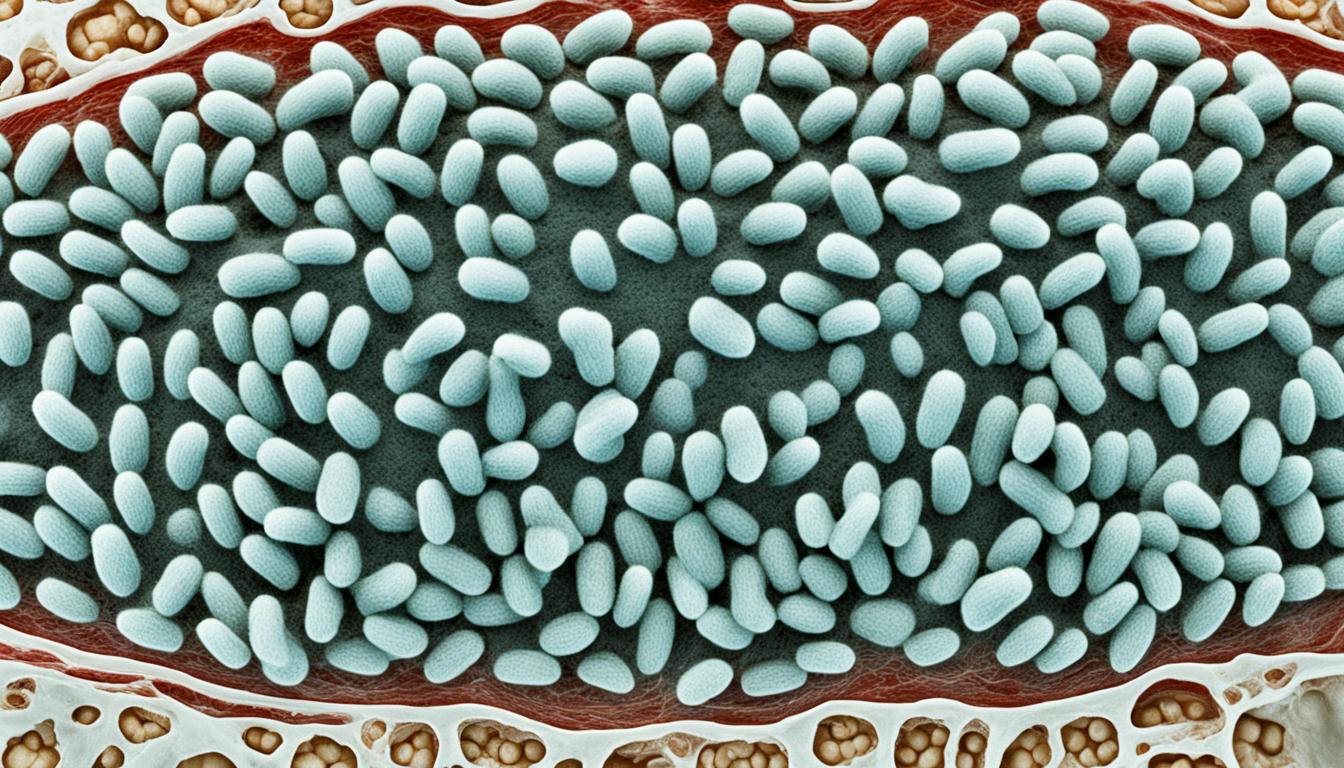Ringworm is a common fungal infection that targets the scalp. It is caused by dermatophytes, which are fungi feeding on skin, hair, and nail cells. If someone has scalp ringworm, they might see red, swollen patches on their head that are bumpy. They might also lose hair and feel itchy.
The infection spreads when people touch an infected person or share things like combs and hats. To figure out if someone has scalp ringworm, a doctor might check visually and use special lamps or cultures to spot the fungus.
For treating scalp ringworm, one may use antifungal creams or take antifungal pills, based on how bad it is. Sometimes, to help hair grow back where it was lost, stem cell therapy could be an option.
Key Takeaways:
- Scalp ringworm is a fungal infection that commonly affects the scalp, causing red, swollen, and bumpy patches, hair loss, and itching.
- The infection can be spread through direct contact with an infected person or by sharing personal items like combs or hats.
- Diagnosis of scalp ringworm may involve a physical examination, Wood’s lamp test, or fungal culture.
- Treatment options include topical or oral antifungal medications, and in rare cases, stem cell therapy for hair regrowth.
- Early detection and treatment are key to preventing the spread and complications of scalp ringworm.
Causes and Risk Factors of Scalp Ringworm
Scalp ringworm or tinea capitis is caused by a type of fungi. It spreads from direct contact or sharing personal items with an infected person. Despite its name, scalp ringworm is not from worms.
Bad hygiene can also cause scalp ringworm. Not washing your hair well makes a perfect spot for the fungi to grow. This is more likely if you have an itchy scalp or sweat a lot.
Things that can make getting scalp ringworm easier include:
- Having a weakened immune system can make you more prone to fungal infections.
- Living in crowded, unclean places can make it easier to pass on the infection.
- Activities like sports or being in daycare can increase the chances of getting ringworm.
Scalp ringworm isn’t picky about who it infects but often targets children between 3 and 7 years old. This age group is at higher risk due to lots of playtime together and sometimes less hygiene awareness.
The first signs are usually an itchy scalp. This can cause hair loss in spots that are affected. If not treated, the infection can make your scalp sore and bumpy.
Treating and Preventing Scalp Ringworm
In the next section, we will talk about how doctors diagnose scalp ringworm. We will also discuss the best ways to treat and prevent it.
Diagnosing Scalp Ringworm
A doctor starts by looking closely at the affected scalp to diagnose ringworm. They might also check with a Wood’s lamp to see if it glows bright greenish-yellow. This is a clear sign of the fungus. Sometimes, they do a fungal culture. They take a sample from your scalp or hair and grow it in a lab to check for the fungus.
Doctors begin by visually examining the scalp for signs like redness and swelling. They look for a rash or bumps. These signs tell them if it might be ringworm.
In some cases, they use a Wood’s lamp during the check-up. This lamp shows the fungus as bright greenish-yellow, making ringworm easier to detect.
If ringworm is still hard to diagnose, the doctor may choose to do a fungal culture test. They take a sample and send it to a lab. There, it grows in a special medium. This helps identify the specific fungus causing the ringworm.
Scalp ringworm can sometimes look like eczema or psoriasis. Because of this, getting the right diagnosis is very important. If you think you might have ringworm, or your scalp keeps itching, it’s best to see a doctor. They can do a full check-up to find out what’s really going on.
Stem Cell Therapy for Scalp Ringworm
Stem cell therapy is a new way to treat scalp ringworm. It is especially useful when there’s a lot of hair loss. This method uses the patient’s own stem cells to grow hair back. It’s a big hope for those dealing with this problem.
First, doctors take stem cells from the patient. They usually get them from areas where hair is plentiful, like the back of the scalp. Then, after processing, these cells are put into the spots where hair is missing.
This approach aims to start new hair growth and make the scalp look better. But remember, this method is still being studied. It’s not something all doctors offer yet. So, before choosing this, it’s important to talk with a healthcare expert. They can help decide if it’s right for you.

